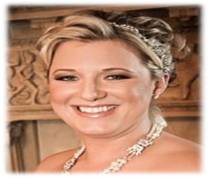Please visit us at our new address:
click the link above to go directly to the new site
This site will share information about the Friends of the Rochester Public Library, its book store, sales and other events. In addition, we will provide you with book reviews and recommendations for great reads! We encourage you to visit our bookstore, where you can purchase gently used new titles at deep discounts when compared to the large bookstores.
 |
| Andrew Carnegie 1835-1919 |
 |
| The Chatfield Public Library Built with funds from a Carnegie Grant of $6,000 |
 |
| Theodore Seuss Geisel 1904-1991 |
"This is the most asked question of any successful author. Most authors will not disclose their source for fear that other, less successful authors will chisel in on their territory. However, I am willing to take that chance. I get all my ideas in Switzerland, near the Forka Pass. There is a little town called Gletch, and two thousand feet up above Gletch there is a smaller hamlet called Uber Gletch. I go there on the fourth of August every summer to get my cuckoo clock repaired. While the cuckoo is in the hospital, I wander around and talk to the people in the streets. They are very strange people, and I get my ideas from them."
"'The Shining... but funnier.'That's about the best way I can describe Thirty Rooms To Hide In. It's the story of growing up with my five brothers in a big house in Minnesota. Yet even with winters raging outside and our father raging within, our mother's protection allowed us to have a wildly fun, thoroughly dysfunc-tional time growing up in the 1950s and ‘60s."
~ Luke Longstreet Sullivan
 Born
in Tallahassee, Florida this true Florida native now calls the Midwest
her home. Well-known in the Minnesota/Wisconsin market Stacey has
represented many of the leading Scotch brands in the spirits industry.
Today however, her true passion for the Islay region has paved the way
to her present position as a Laphroaig Brand Ambassador and Official
Minnesota Protector of the Peat.
Born
in Tallahassee, Florida this true Florida native now calls the Midwest
her home. Well-known in the Minnesota/Wisconsin market Stacey has
represented many of the leading Scotch brands in the spirits industry.
Today however, her true passion for the Islay region has paved the way
to her present position as a Laphroaig Brand Ambassador and Official
Minnesota Protector of the Peat. |
| Featured author, Ken Allsen will discuss his book on March 8th |
+Caroline+Greyshock+2005.jpg) |
| Charlaine Harris |
 Harris is most recently known for her Southern Vampire Mysteries, also known as the Sookie Stackhouse Series, about a telepathic young waitress in Louisiana. This series works under the premise that the Japanese have developed a blood substitute that has allowed vampires to "come out of the coffin" and live alongside humans without being a threat to the human population. Yes, it stretches the imagination and readers do need the ability to suspend reality for a little while, but somehow Harris makes these books work. In fact, they work so well that HBO has developed a very successful television program, True Blood, which uses the foundation of Harris' books to create the television program's storyline.
Harris is most recently known for her Southern Vampire Mysteries, also known as the Sookie Stackhouse Series, about a telepathic young waitress in Louisiana. This series works under the premise that the Japanese have developed a blood substitute that has allowed vampires to "come out of the coffin" and live alongside humans without being a threat to the human population. Yes, it stretches the imagination and readers do need the ability to suspend reality for a little while, but somehow Harris makes these books work. In fact, they work so well that HBO has developed a very successful television program, True Blood, which uses the foundation of Harris' books to create the television program's storyline. For those who are less able to suspend reality and prefer something a bit more believable, Harris also has a couple of more "normal" series under the mystery genre: The Aurora Teagarden Mysteries, and The Lily Bard Shakespeare Mysteries. Both of these series are more mainstream and enjoyable for those who prefer something a little less...bizarre. Aurora Teagarden is a librarian who has a knack for discovering dead bodies and solving crimes. She’s smart and witty, and an all-around enjoyable main character. She's the kind of character you can enjoy and then pass along to your mother or grandmother and know that either of them will enjoy it, too.
For those who are less able to suspend reality and prefer something a bit more believable, Harris also has a couple of more "normal" series under the mystery genre: The Aurora Teagarden Mysteries, and The Lily Bard Shakespeare Mysteries. Both of these series are more mainstream and enjoyable for those who prefer something a little less...bizarre. Aurora Teagarden is a librarian who has a knack for discovering dead bodies and solving crimes. She’s smart and witty, and an all-around enjoyable main character. She's the kind of character you can enjoy and then pass along to your mother or grandmother and know that either of them will enjoy it, too.